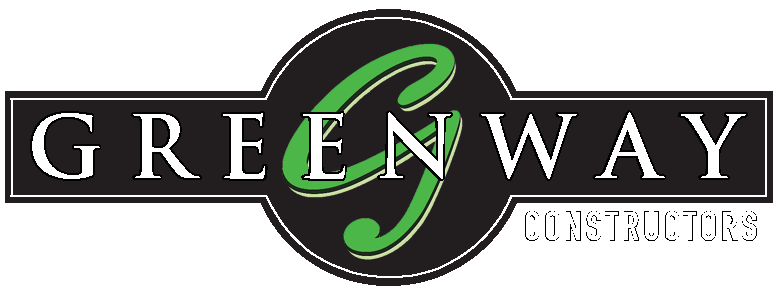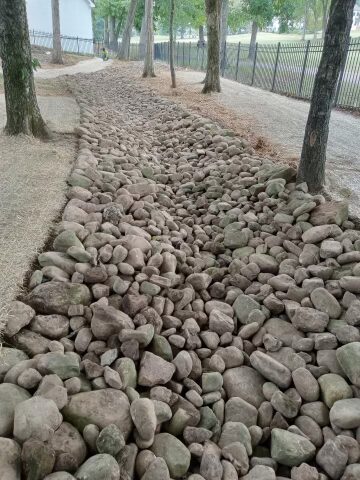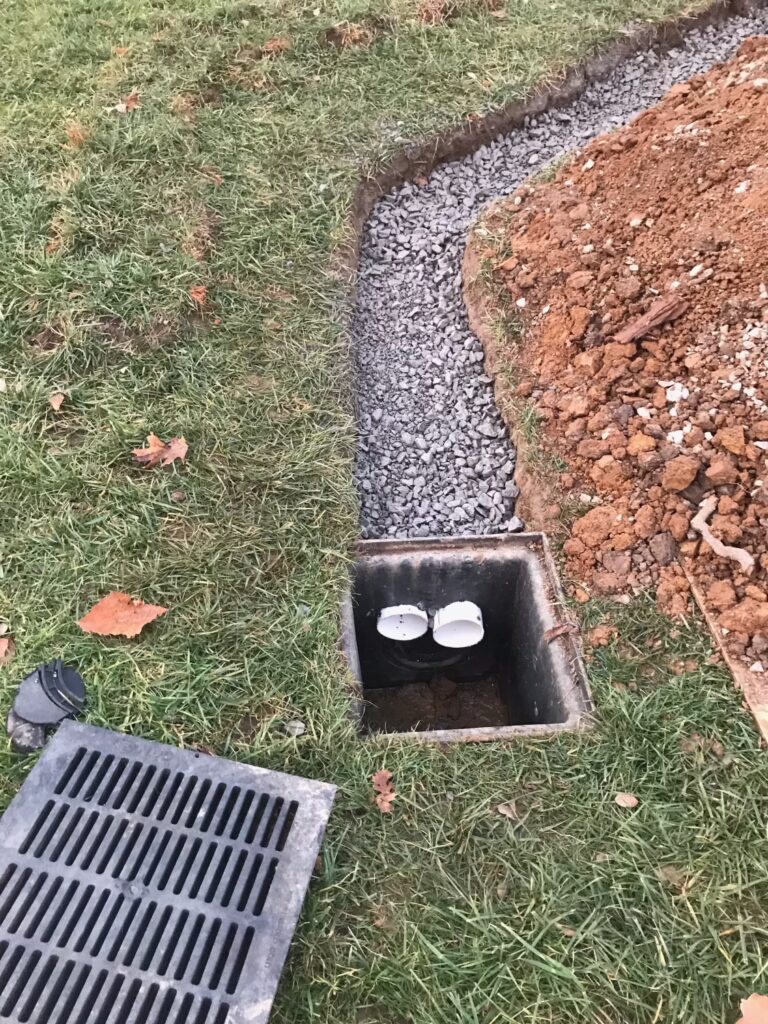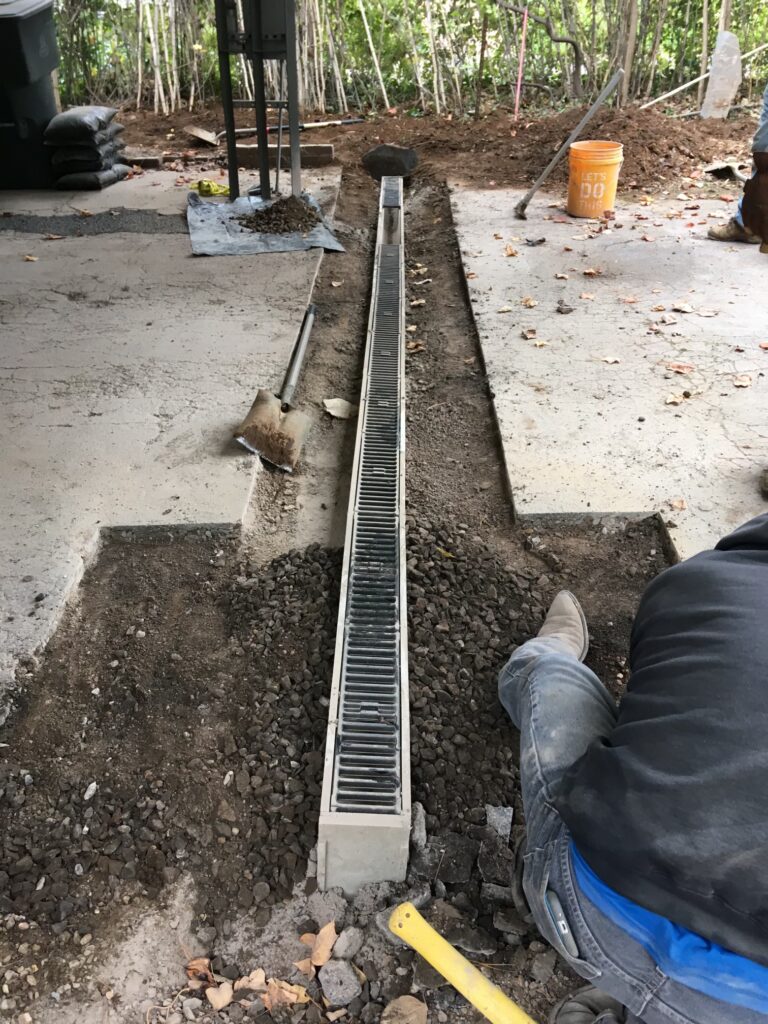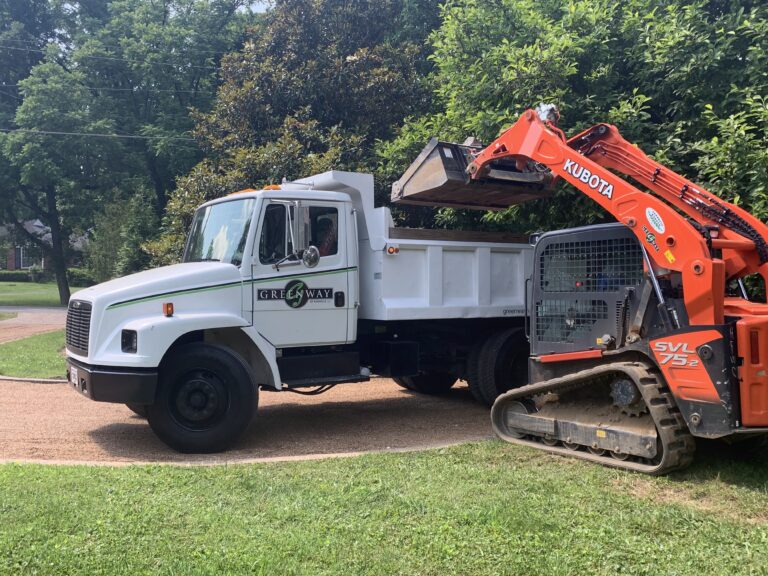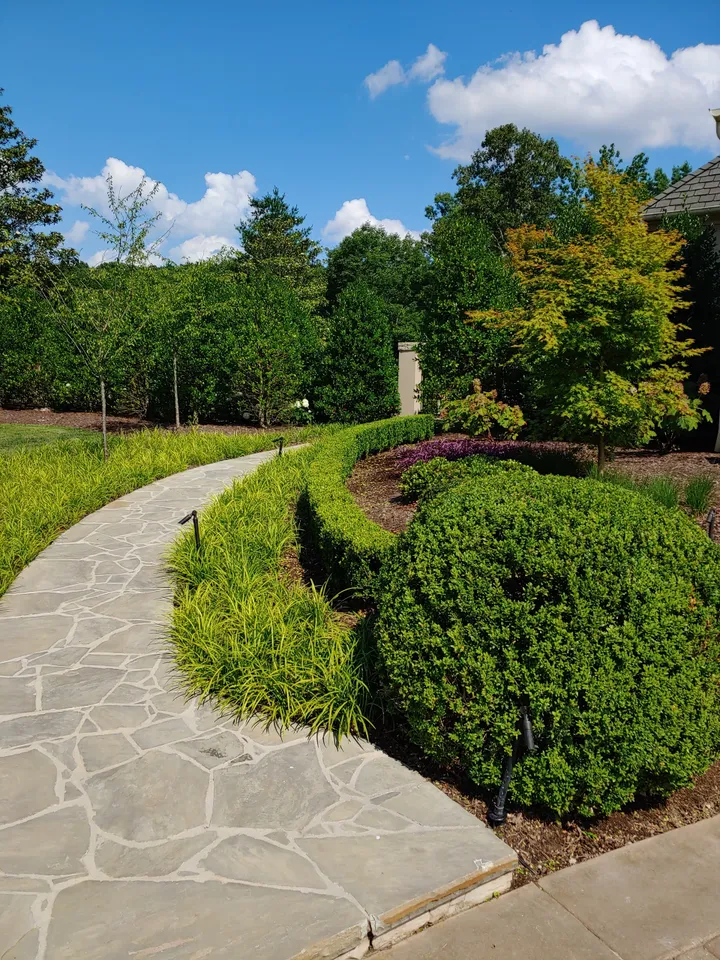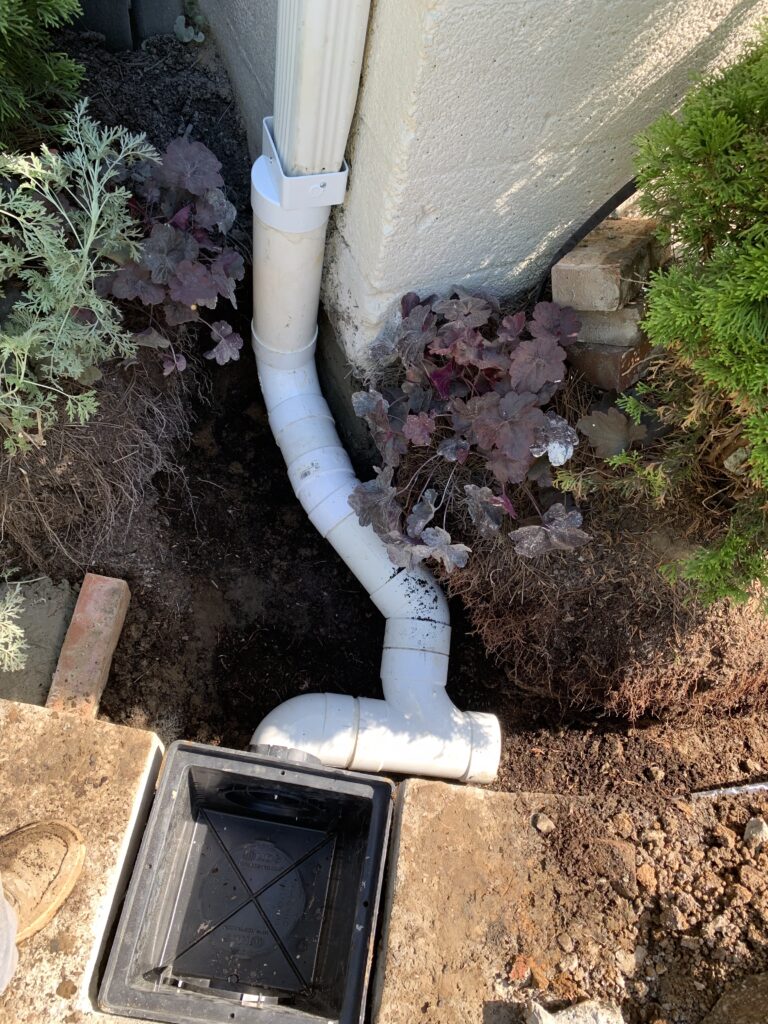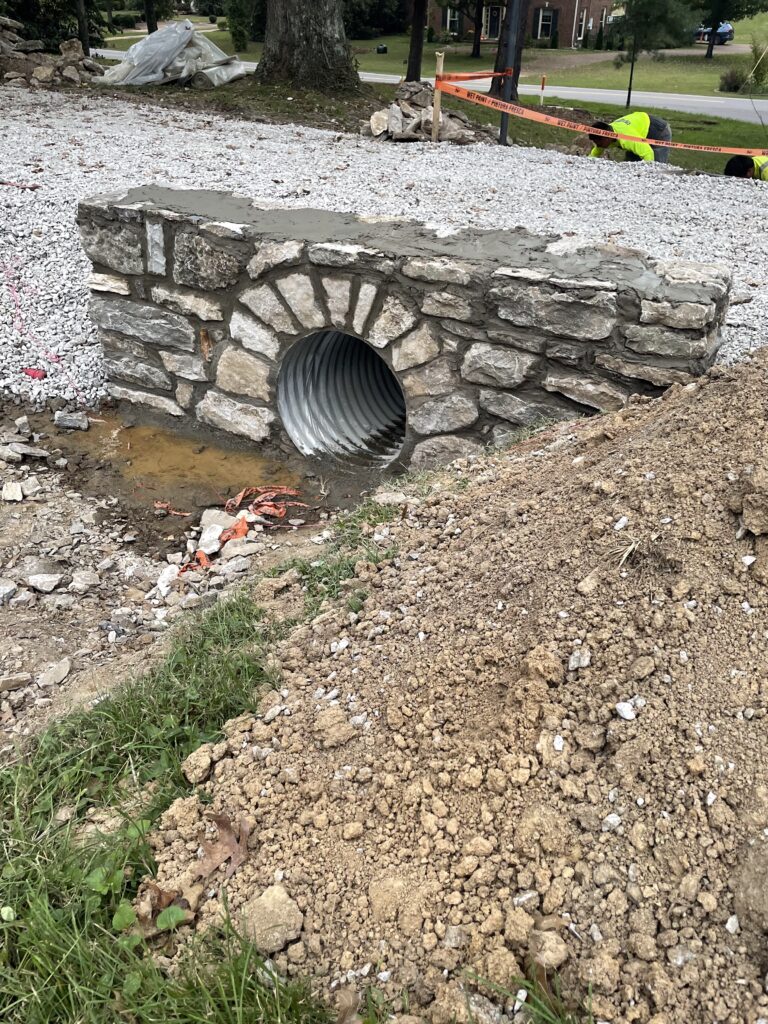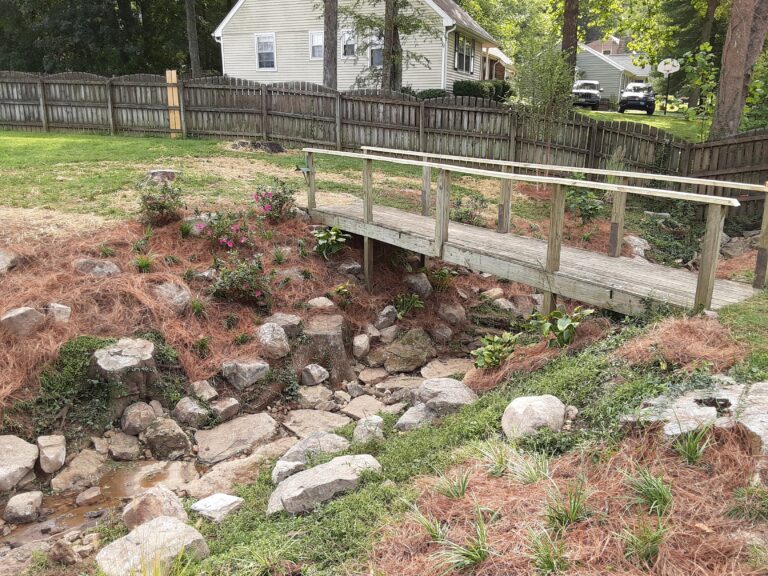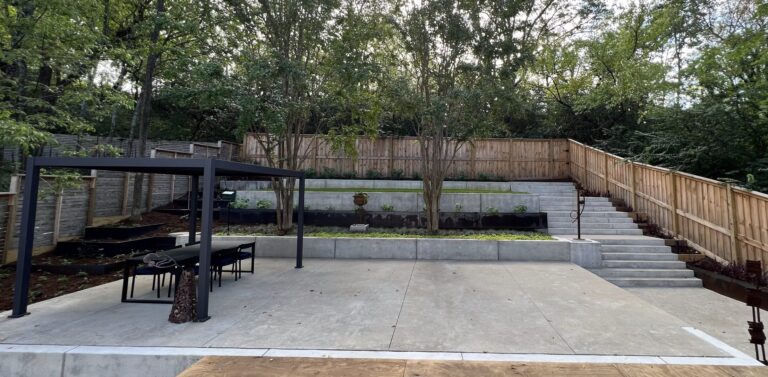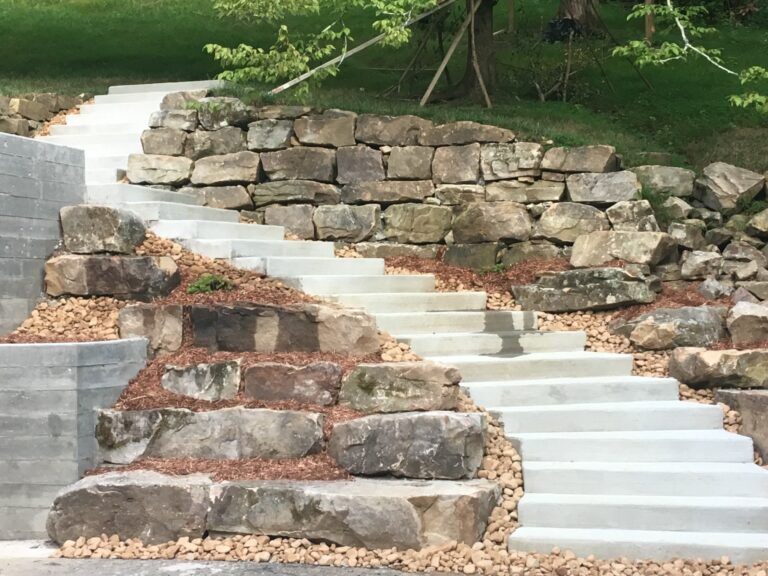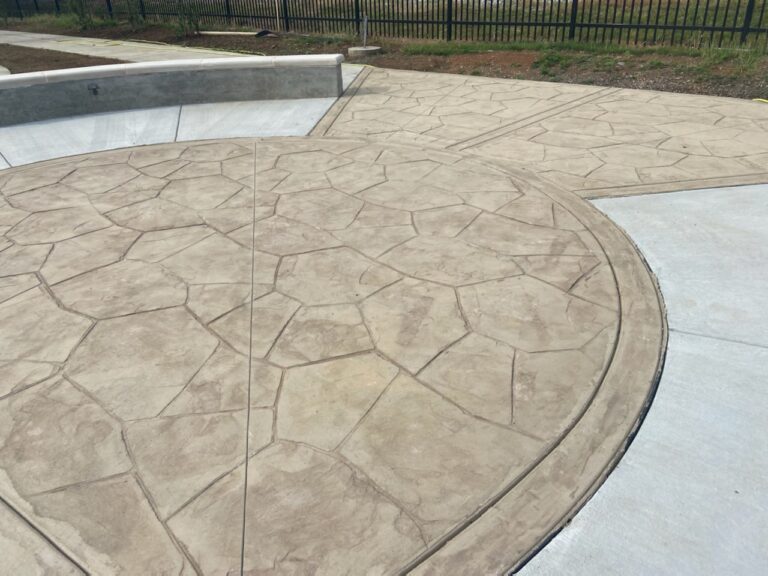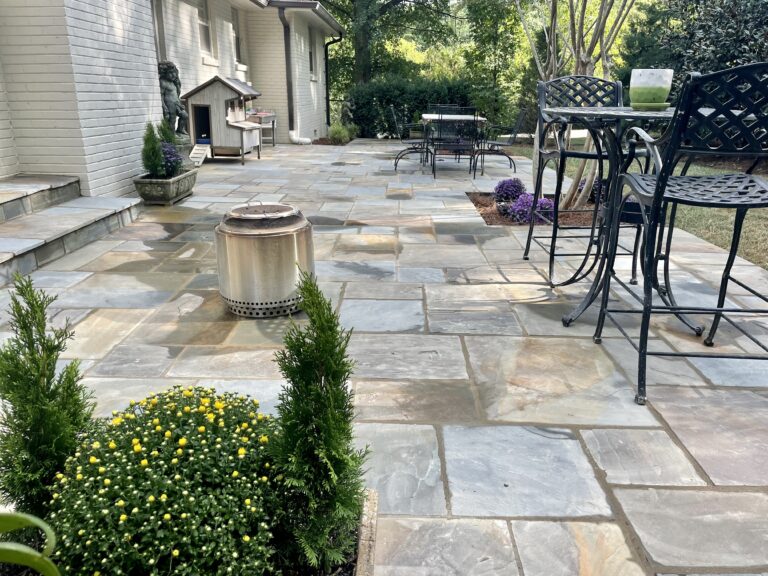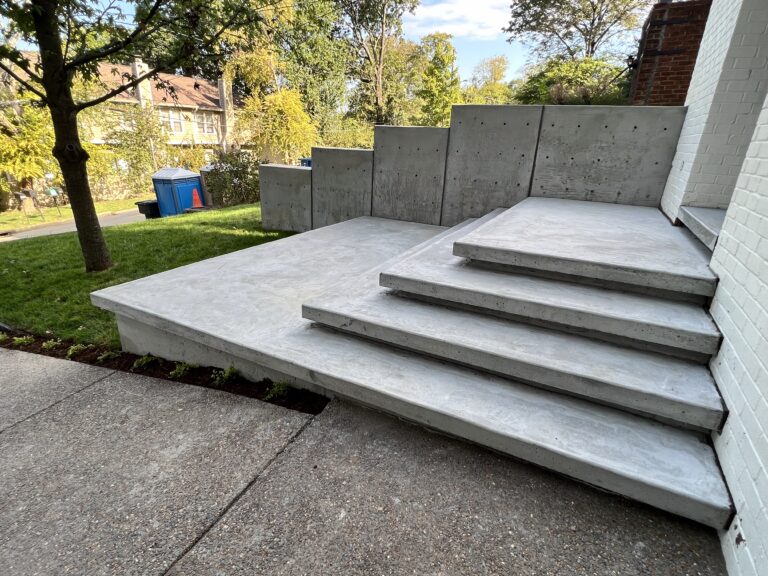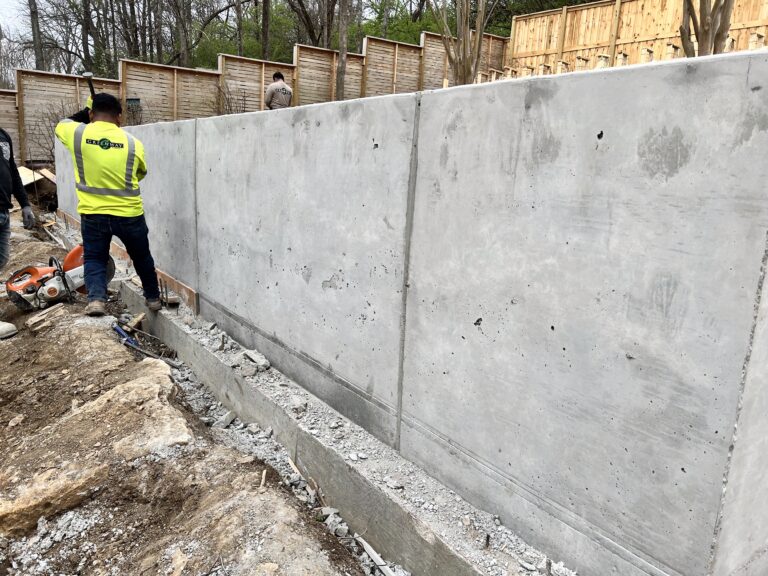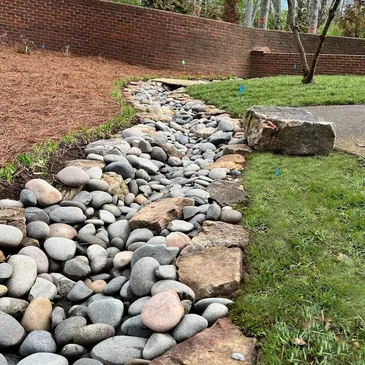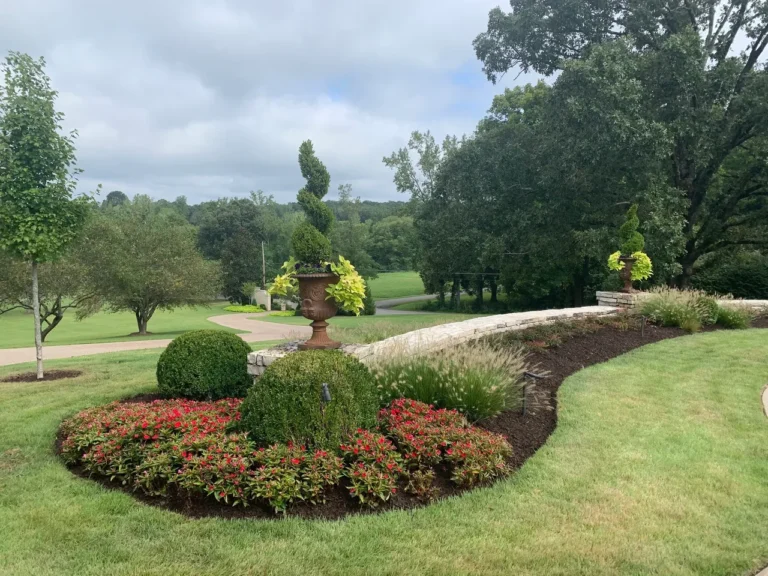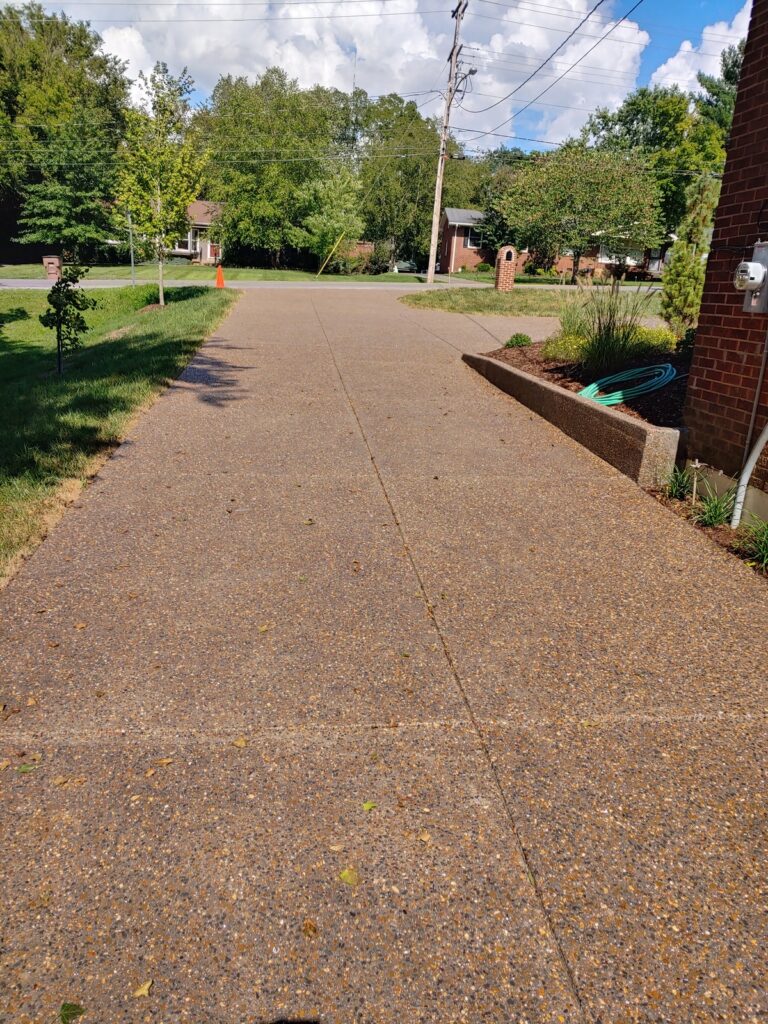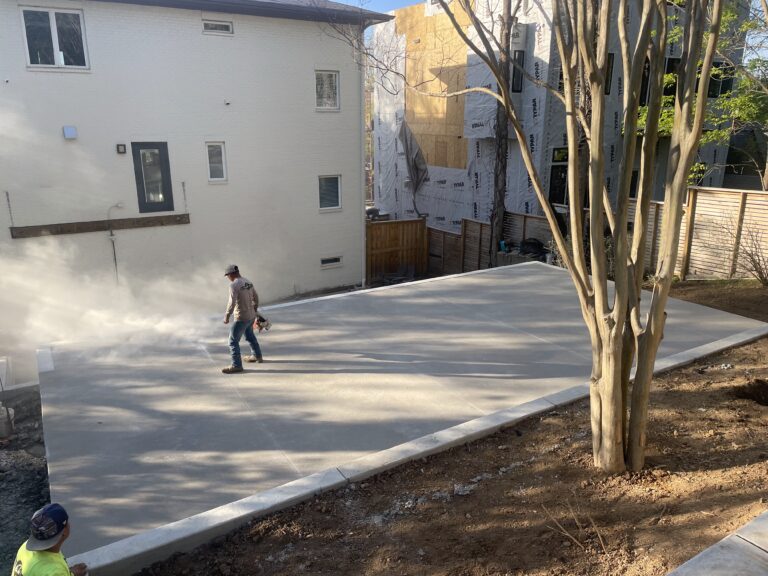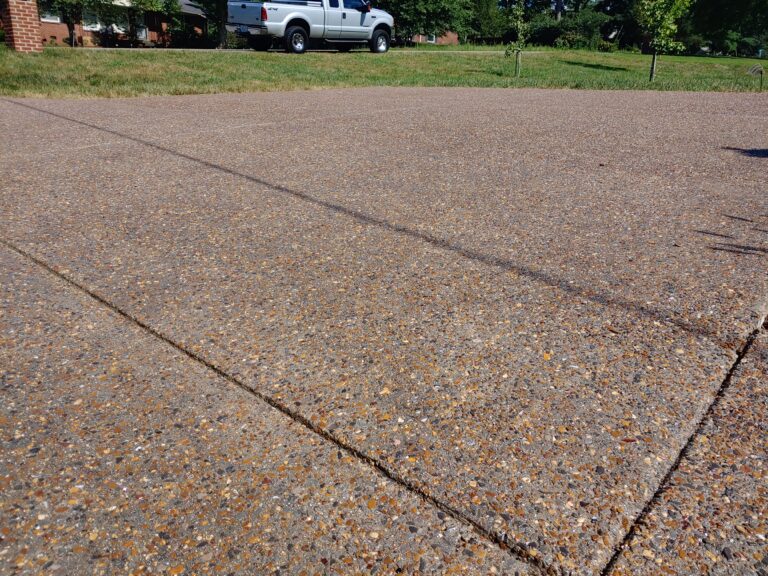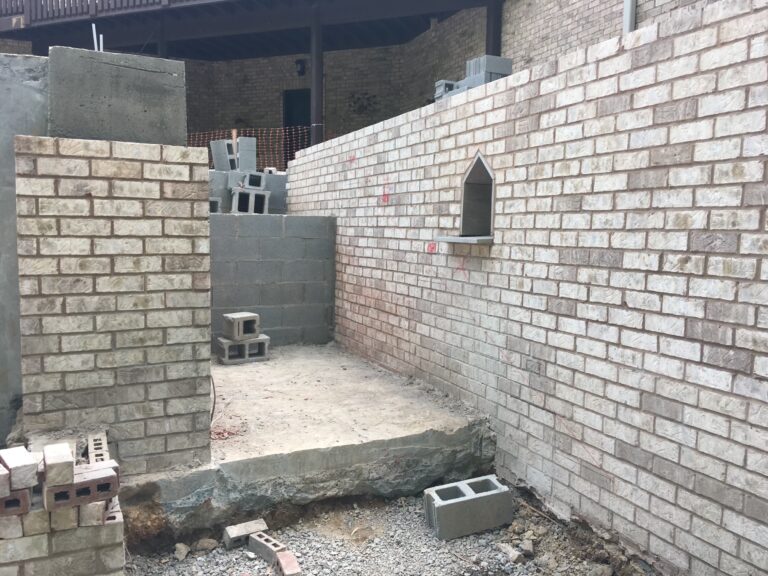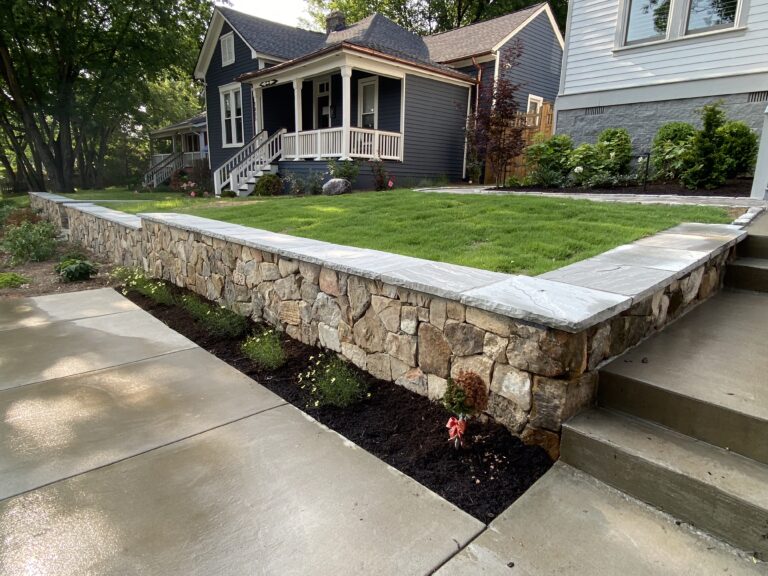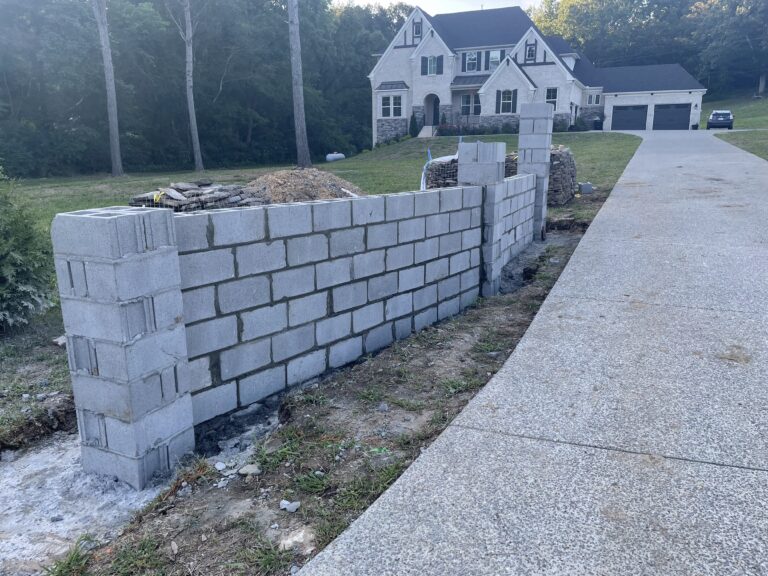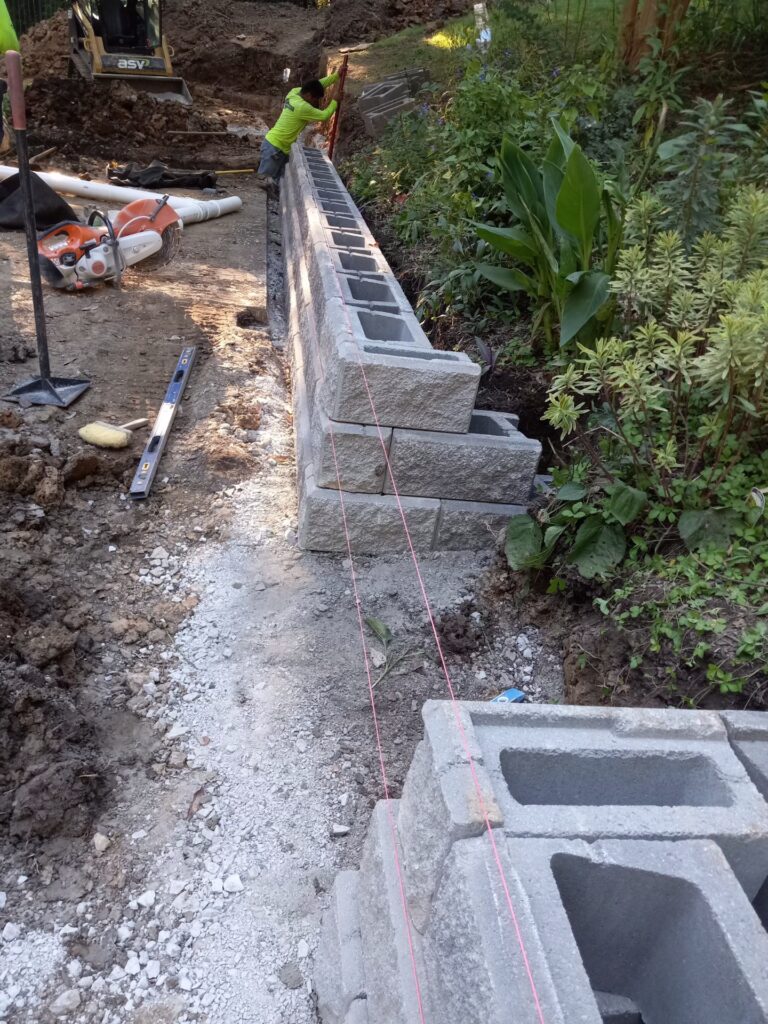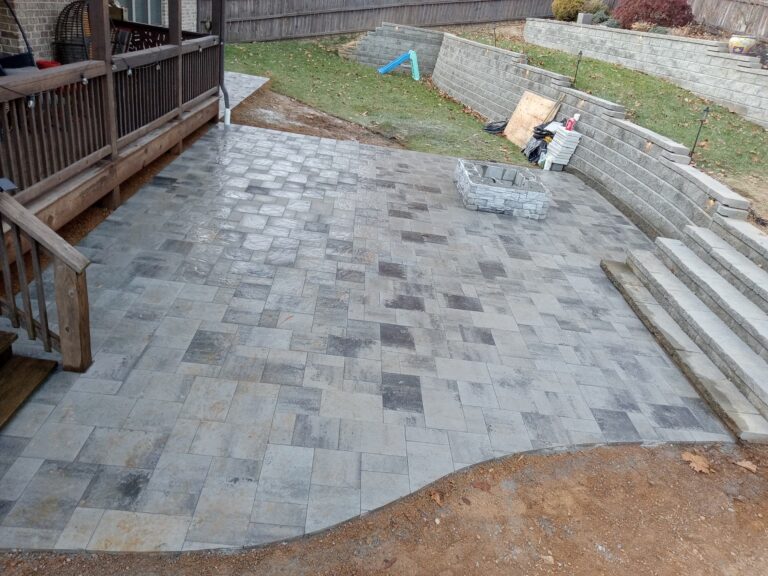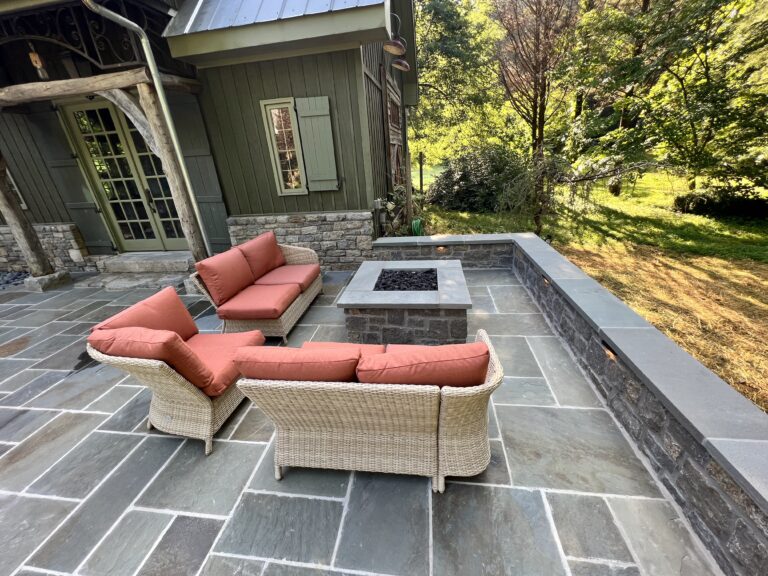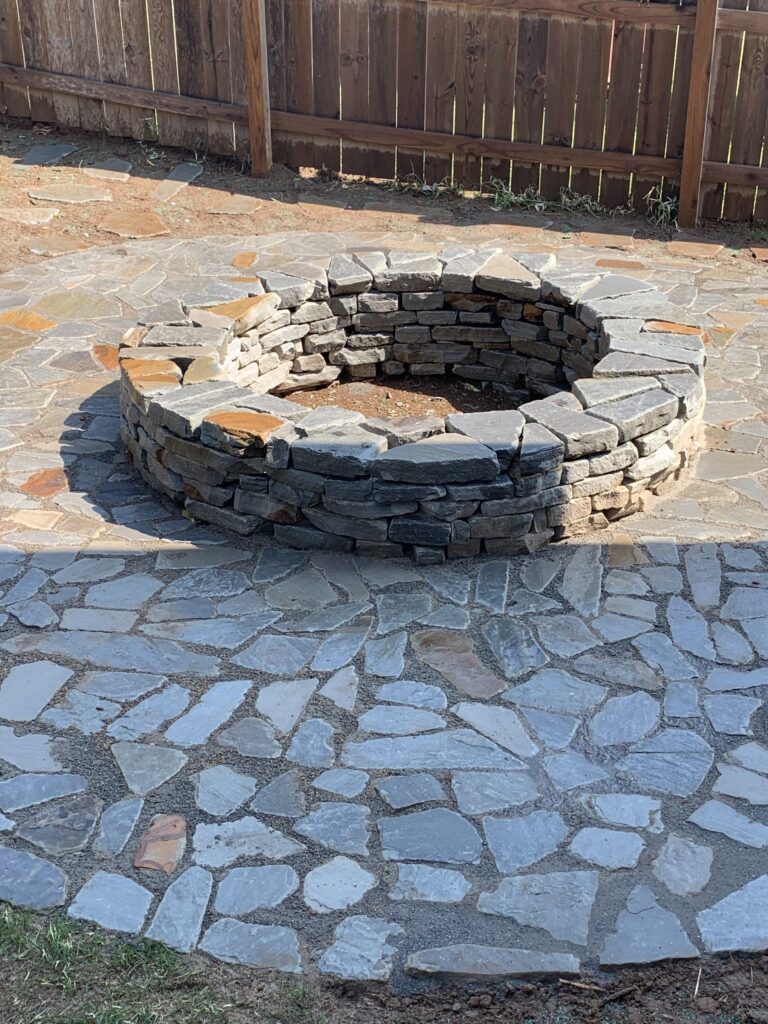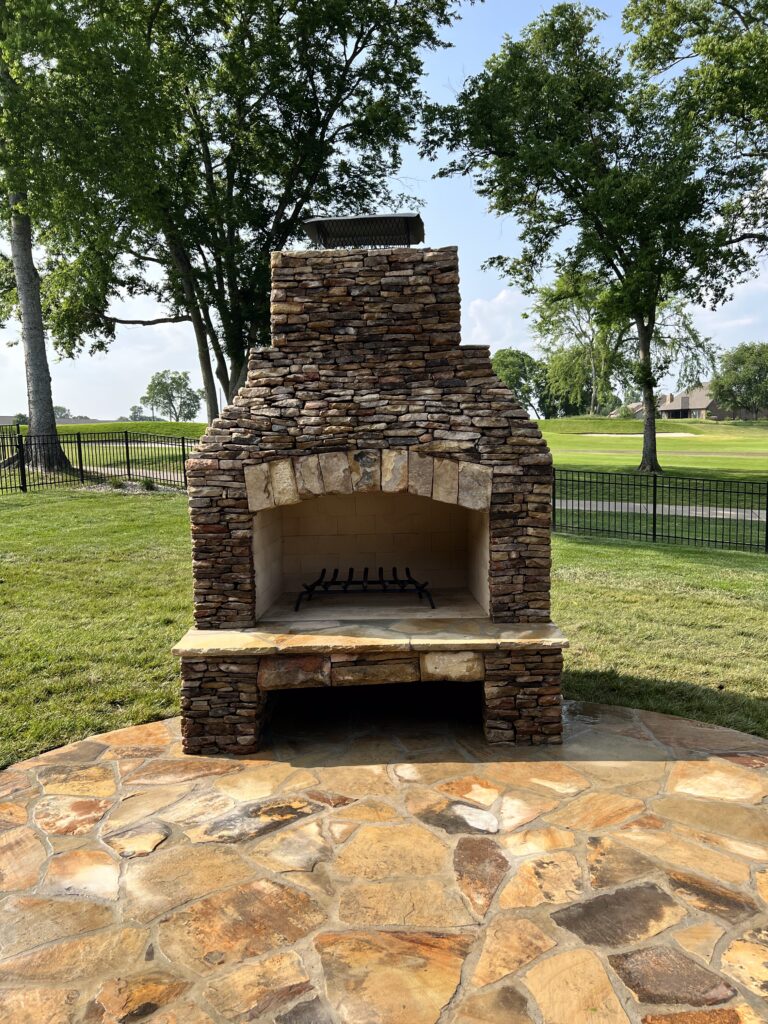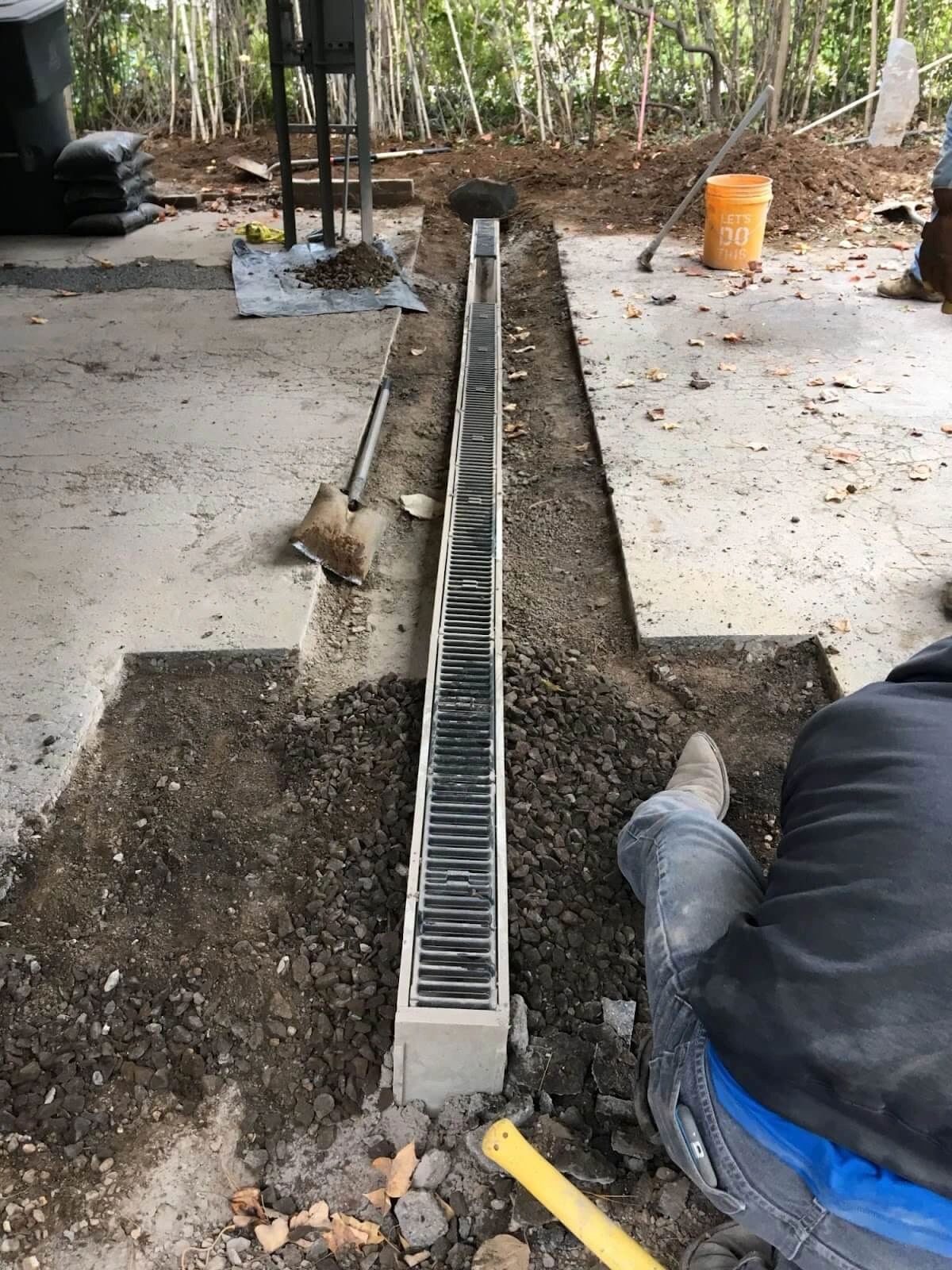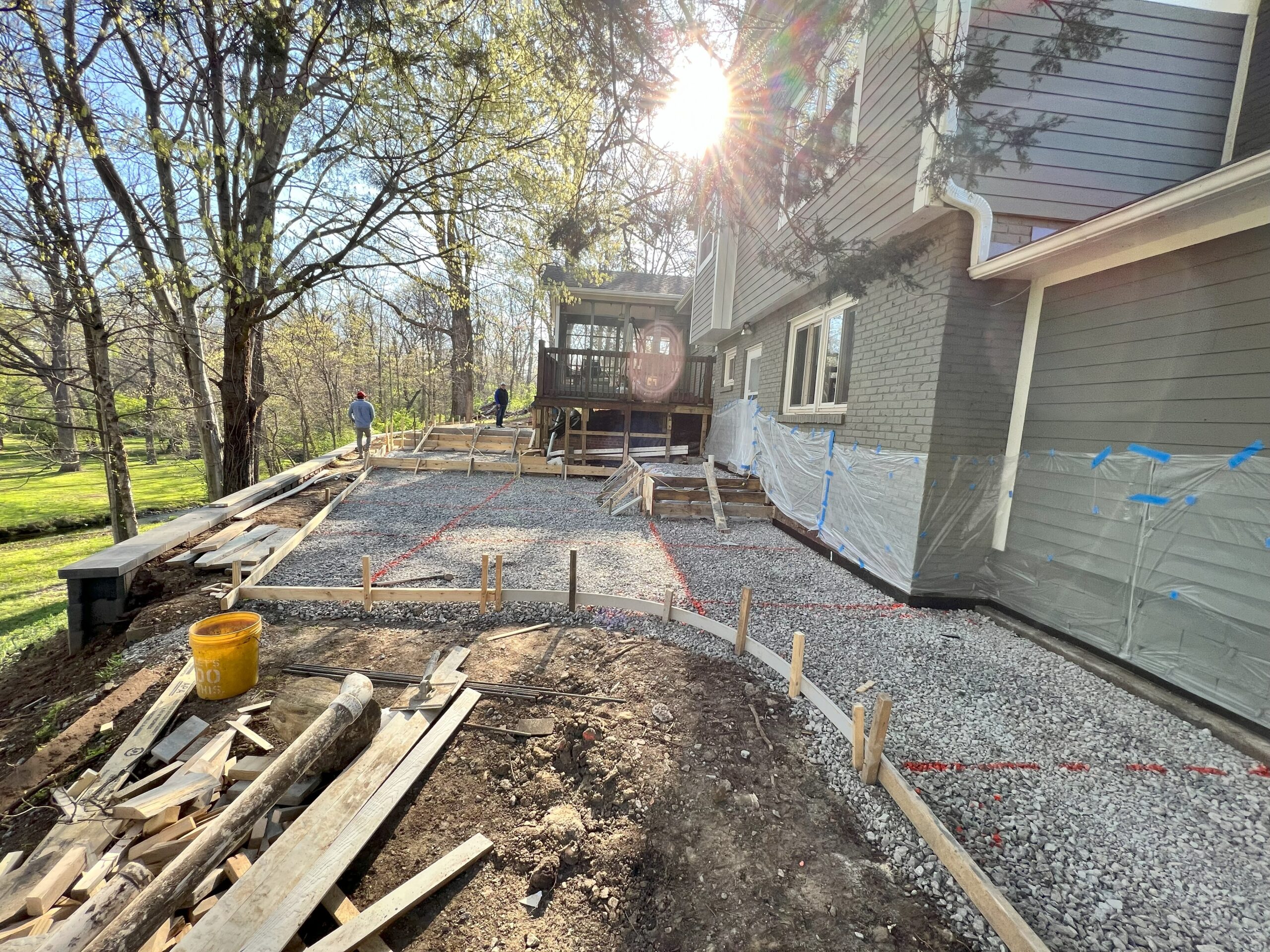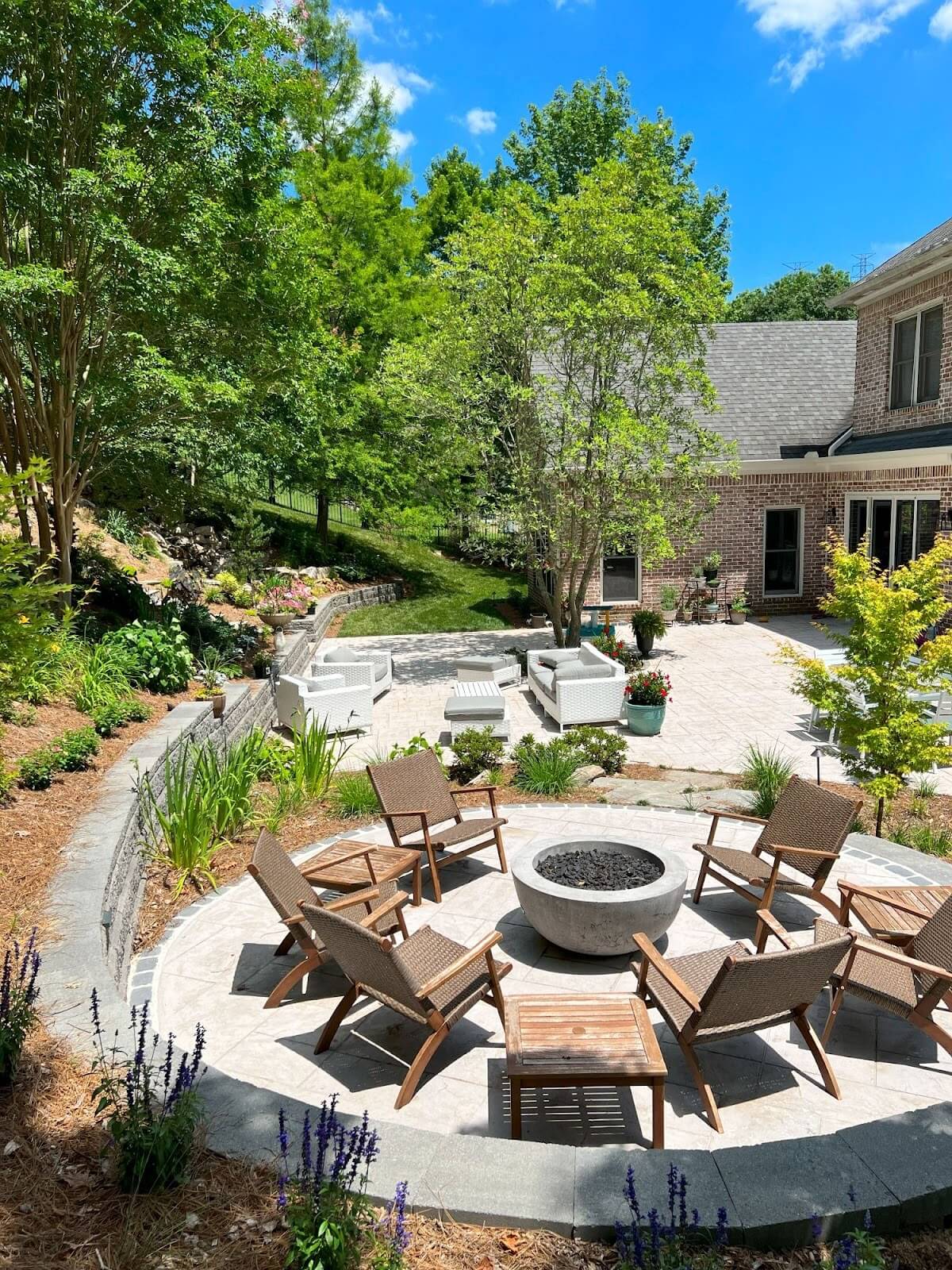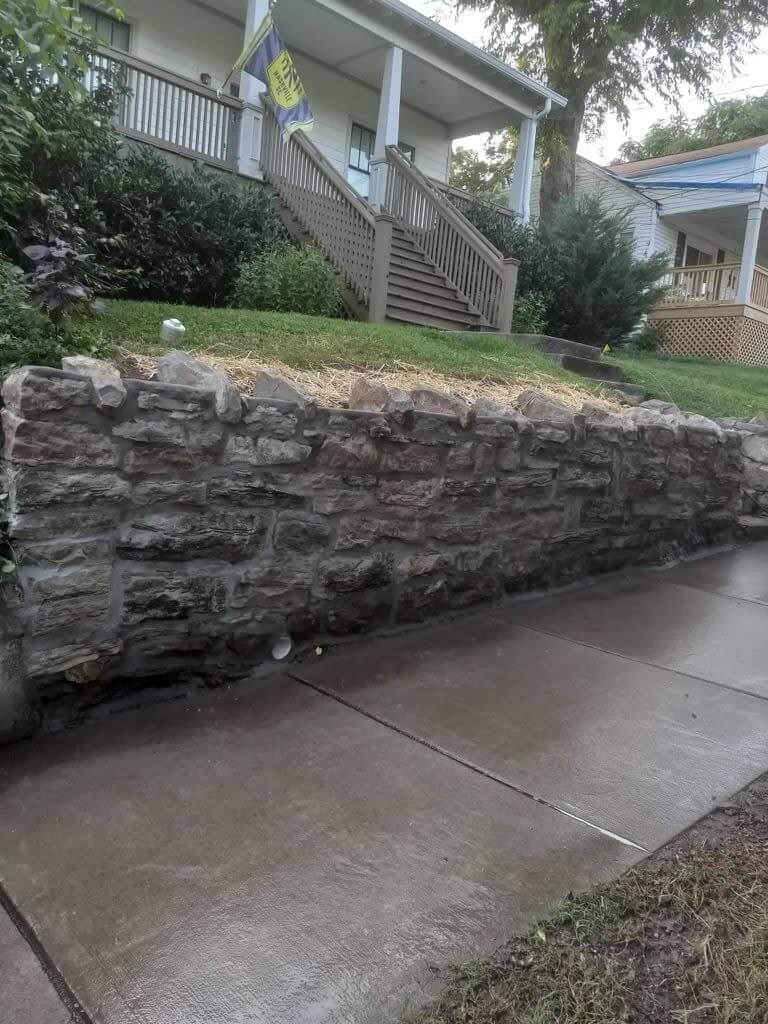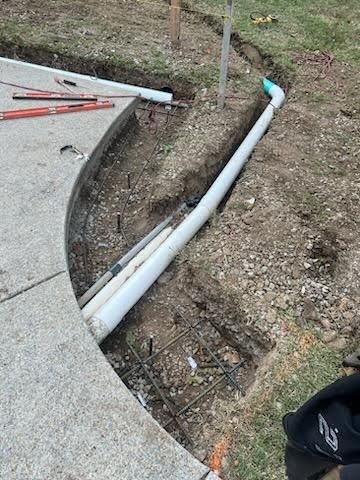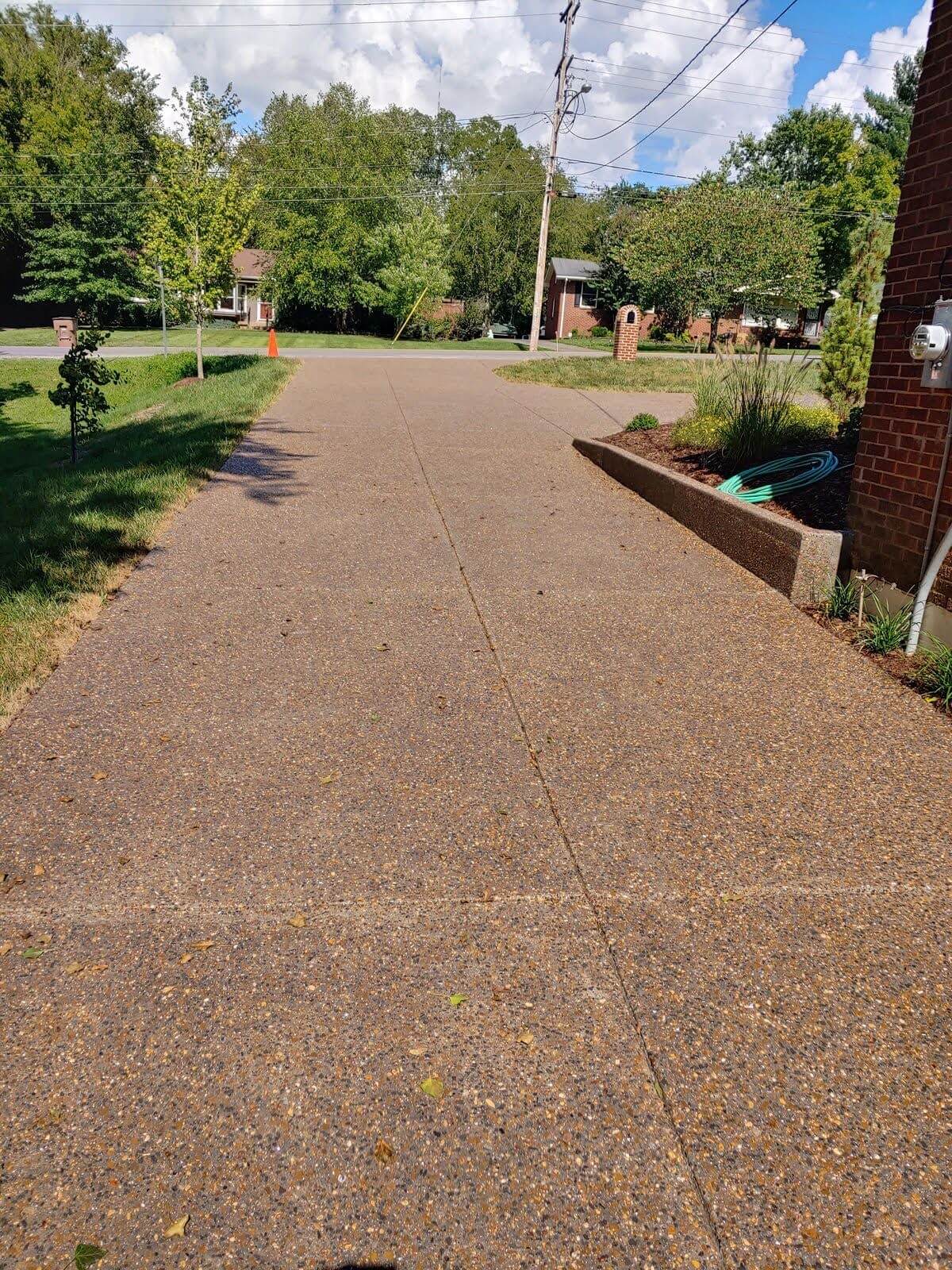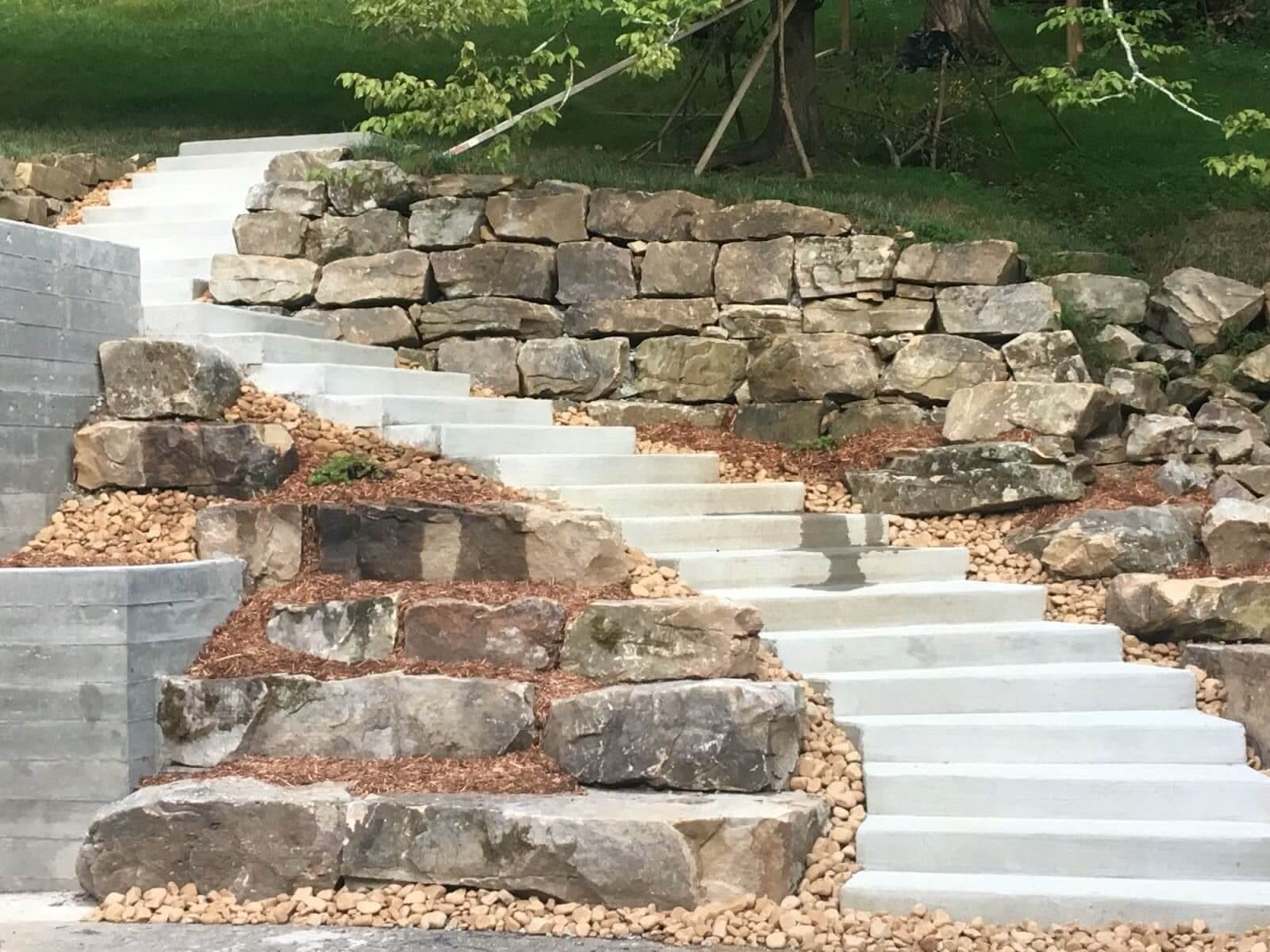There are many pros and cons of living on a hill. You get breathtaking views, abundant natural lighting, and increased privacy, but there are also potential drainage and erosion issues, leading to structural stability concerns. It’s important to understand how to best manage the property to prevent instability issues or damage. We will explore some issues to consider when living on a slope, effective design strategies for addressing them, and how expert hardscaping contractors will help ensure your property is optimized.
What Disadvantages Does a Slope Have for Homes?
Any type of land can have drawbacks when it comes to having a house on it. Slopes tend to come with a few extra considerations due to the less stable nature of a hill over flatland. When a house on a slope is first built, it should be made with an extra deep foundation to help secure it into the ground. This requires added material during the building process, but it also creates more potential points of failure that impact the rest of the building. In order for the floor to be level, the foundation may have to be taller on areas of steeper slope.
Slopes promote faster movement of water downhill after heavy rainfall, which affects your home in a couple of ways. It could lead to the water collecting near the foundation depending on the land’s grading and where your home is located. Prolonged water exposure can cause foundations to crack, leading to leaking and failure. Not only is that expensive to repair, but it can compromise the safety of the entire house. The other concern with rapid water flow downhill is erosion of soil. As the water is pulled by gravity, soil is caught up in the movement and taken away from its spot. This can reduce the stability of the ground the house is sitting on and degrade the slope.
Usability is another drawback to living on an incline or decline. Hills are sometimes difficult to navigate—they can be uneven and treacherous in spots and are more challenging than flat land to walk. Slopes also have less usable space for outdoor activities and structures; building a patio or shed on a slope isn’t going to have the same outcome as one on even ground. Even gardening is more difficult, as plants will need to withstand the effects of erosion.
How Do You Maintain a Sloped Yard?
If your home will be or is already on a slope, you should conduct a thorough site analysis to map the topography, test the soil type, and determine what areas of concern exist. Hiring a professional landscaping contractor will help evaluate the space to make sure all potential issues are caught and that there’s a plan to fix them. Ideally, the house will have been constructed considering these aspects and is positioned advantageously to prevent water pooling and grading issues. That isn’t always the case, and work will need to be done to fix that.
The type of soil you have impacts the sturdiness of the ground and how effective natural drainage is. When planning a house design on sloped land, the foundation of the house should be dug deeply into the ground for increased security. With the foundation being extra critical to structural integrity, the importance of preventing foundation damage from pooling water and drainage problems is high.
Beyond the initial construction choices, preventing erosion will be a key component of maintaining sloped land. There are several options that can be used that will work best in combination with one another. Start with having a proper grade away from all structures. In areas where slopes and surface water are not able to be diverted away from structures, installing drainage systems that will allow water to seep into the soil without creating runoff is ideal. In this case, a French drain may be a good solution. This drainage solution encourages ground absorption while directing the collected water elsewhere. It is made from a PVC pipe placed deep into the ground then covered with filtering fabric, gravel, and a top layer of sod. A retaining wall is another option to prevent erosion. These walls vary in height and are constructed with materials such as blocks, poured concrete, or stones. The wall helps hold soil in place, serving as a literal barrier against runoff. Combining a French drain with a retaining wall is a common solution for managing drainage on sloped properties. Experienced drainage contractors will be able to help you determine whether one or both solutions are right for your space.
Even the choice of plants can affect maintaining inclined land. Choose plants that will be accommodating to the degree of sun exposure and soil runoff that may occur. Deep-rooted shrubs or trees work best for stability on sloped terrain. Consider planting cover crops such as grasses or wildflowers, which can slow down surface runoff and prevent erosion.
“Work with skilled Nashville hardscaping and outdoor construction professionals who understand your vision and respect your schedule. Contact us for a free quote!”
How to Improve Usability of Sloped Land
Hillsides are not as functional as flat land, but this can be addressed through a retaining wall as well. The retaining wall allows the buildout and maintenance of a flat space, which is perfect for patios or gardens. You can also use a terracing system—a series of retaining walls at different levels of the slope—to create multiple functional areas while still managing erosion. Retaining wall contractors will be efficient at determining how to position the walls so that they hold up, including how many walls will be needed, the best height and length, and what material is best suited to the situation.
Slopes pose a challenge for those with mobility issues—it’s not easy to walk uphill or on uneven ground. Building a concrete pathway and stairs with a rail can make it easier to get around, but they require careful planning to ensure the stairs aren’t too steep and that the path isn’t subject to issues with erosion. Engaging with hardscaping professionals like Greenway of Nashville is the ideal way of preventing costly miscalculations and getting the heavy work done without breaking a sweat.
Every homeowner should regularly inspect their yard for signs of erosion, settling, or drainage issues. While there may not be current problems, the potential is always present. The sooner you can catch and address the issue, the less severe the effects—and the less costly the outcome. If you are in Nashville and aren’t certain of what to look for or aren’t sure how to fix what you’re finding, Greenway will help assess your property and map out solutions.
By understanding effective design strategies and implementing proper yard maintenance techniques, you can optimize your space while enjoying the natural beauty and serenity of your hillside home. Your sloped land can become a source of pride, offering a harmonious balance between functionality and aesthetics.
Greenway of Nashville is here to help your hillside home stay safe, functional, and beautiful. Prevent costly erosion issues and preserve your land today by calling us at (615) 238-4574 or by scheduling a consultation through our easy online form.
Read more content related to:
- What Drainage System Does My Retaining Wall Need?
- 4 Types of Landscape Drainage Solutions and When to Apply Each
